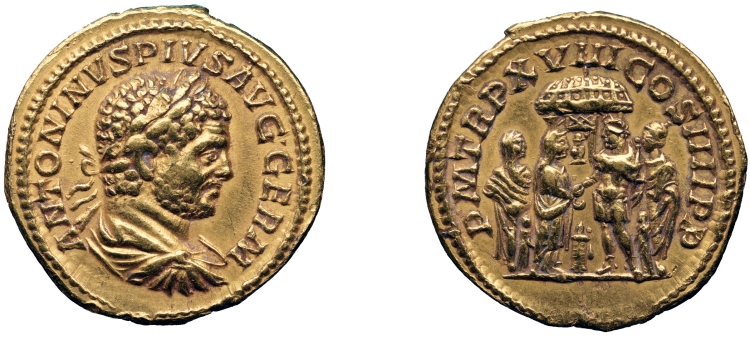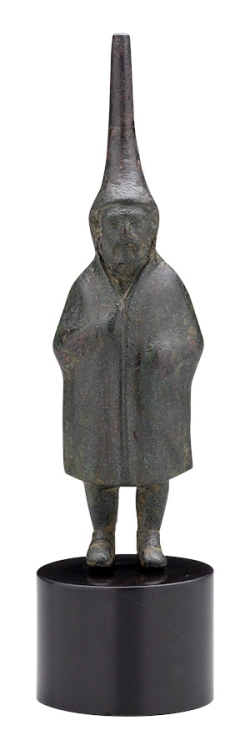
By
An exhibition opening next month at the McMullen Museum of Art examines the multifaceted interaction between Roman imperial culture and local traditions throughout the eastern Mediterranean, through artifacts of daily life, politics, technology and religion.
Running from Feb. 14 to May 31, “Roman in the Provinces: Art on the Periphery of Empire,” organized by the Yale University Art Gallery and the McMullen Museum of Art, includes objects from across the empire, a region rich in ancient civilizations. Many of the works have rarely, or never before, been on view to the public. Their juxtaposition presents a rich image of life in the Roman provinces between the 2nd and 6th century CE.
The public is invited to join the Boston College community at an opening reception for “Roman in the Provinces” on Feb. 16 at 7 p.m. The event will include remarks from McMullen Museum Director and Professor of Art History Nancy Netzer and exhibition curators Assistant Professor of Classical Studies Gail L. Hoffman and Lisa R. Brody, associate curator of ancient art at Yale University Art Gallery.
Mention of the Roman Empire conjures images of sculpted marble emperors, elaborately engineered aqueducts and conquering soldiers. While in the public mind imperial Rome often recalls a consistent cultural lens – people speaking Latin and wearing togas, watching gladiatorial games and enjoying public baths – in reality the empire was vast and diverse, with a multitude of cultural identities, as “Roman in the Provinces” makes clear.
Inhabitants of even the empire’s far-flung provinces – Britain, Gaul, Turkey, Syria, Egypt and Tunisia – were all “Roman,” but to varying degrees. By 212 CE the empire had extended Roman citizenship to all free men within its borders, while continuing to accommodate and incorporate the region’s different languages, religions, and cultures. This was a major reason for the empire’s strength and longevity.

McMullen exhibition organizers say scholars studying Roman art and archaeology recently have turned their attention to these myriad local cultures, fascinated by what material culture may reveal about the lives and experiences of local people living in the provinces of the empire.
On display in “Roman in the Provinces” are rare artifacts from the collection of the Yale University Art Gallery, including a newly conserved 6th-century floor mosaic from Gerasa and wall painting from a Roman house at Dura-Europos, both discovered during University excavations at their respective sites, with additional loans from the Museum of Fine Arts, Boston, Princeton University Art Museum, and the Walters Art Museum.
The exhibition also highlights a rich selection of Egyptian textiles of the 4th to 9th century CE from the local private collection of Donald and Barbara Tellalian. Also displayed will be a wide array of objects – mosaics, textiles, pottery, inscriptions, sculpture, glass and coins – that reveal how earlier cultural interaction intensified during the empire, through access to trade and transport networks and new technologies.“The McMullen Museum is pleased to collaborate once again with the Yale University Art Gallery on a groundbreaking exhibition that explores through the material evidence in various media what it meant to be ‘Roman’ on the periphery of the empire,” said Netzer. “The exhibition encourages viewers to ponder the limitations of the concept ‘Roman art’ as it pertains to production in the far-flung provinces, each of which had an indigenous artistic tradition.”
By viewing these objects as part of a global culture and as local expressions of cultural identity, exhibition organizers say, visitors are encouraged to question what it actually meant to be Roman and gain a broadened understanding of the Roman Empire.
“People tend to envision the Roman Empire through the imperial portrait busts, togate statues, and Latin tombstones that fill many museums or in the brick and marble amphitheaters, arches, fora, and baths of famous ancient cities,” said Hoffman. “Yet the range of material culture and languages used by inhabitants in this empire’s huge territorial expanse was much more varied.
“Archaeologists are only now beginning to explore fully the multicultural nature of its many provinces and to grapple with the numerous identities expressed through the objects which its millions of inhabitants used every day. This exhibit encourages visitors to expand their view of what it meant to be Roman and in doing this to deepen their understanding and appreciation of the accomplishments of this ancient society.”
“Roman in the Provinces” is underwritten by Sharon and Richard A. Hurowitz, the National Endowment for the Arts, the Yale University Art Gallery Exhibition and Publication Fund, Boston College, the Patrons of the McMullen Museum, and Leslie and Peter Ciampi.
For directions, parking, and program information, call the McMullen Museum at (617)552-8100 or see the museum’s website at www.bc.edu/artmuseum.



